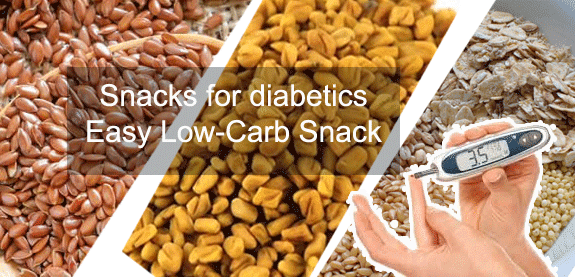Every year on 14 November we celebrate “Diabetes Day”. Diabetes, which is causing a great disturbance in our healthy living. Our changed lifestyle is responsible for Diabetes since physical labour has no place in our daily lifestyle. We have to find ways to secure ourselves from this disease. Let us discuss the reasons, effects and ways we can fight against diabetes.
What is Diabetes ?
Diabetes is a disease in which the body’s ability to produce or respond to the hormone insulin is impaired, resulting in abnormal metabolism of carbohydrates and elevated levels of glucose in the blood.
Normally this disease is found in the age group of 35 -60. However, if your mother or father or any ancestral relation is suffering from this disease, then it is likely to have more chances that you will also go to have the same.
Early Symptoms of Diabetes
- Peeing more often and being thirstier. The average person usually has to pee between four and seven times in 24 hours, but people with diabetes may go a lot more.
- Dry mouth and itchy skin. Because your body is using fluids to make pee, there’s less moisture for other things. You could get dehydrated, and your mouth may feel dry. Dry skin can make you itchy.
- Blurred vision. Changing fluid levels in your body could make the lenses in your eyes swell up. They change shape and lose their ability to focus.
- Yeast infections. Both men and women with diabetes can get these. Yeast feeds on glucose, so having plenty around makes it thrive. Infections can grow in any warm, moist fold of skin, including:
- Between fingers and toes
- Under breasts
- In or around sex organs
- Slow-healing sores or cuts. Over time, high blood sugar can affect your blood flow and cause nerve damage that makes it hard for your body to heal wounds.
- Pain or numbness in your feet or legs. This is another result of nerve damage.
Other Type 1 Symptoms
- Unplanned weight loss. If your body can’t get energy from your food, it will start burning muscle and fat for energy instead. You may lose weight even though you haven’t changed how you eat.
Different types of Diabetes
There are a number of different types of diabetes, some of which are more prevalent than others. The most common form of diabetes in the general population is type 2 diabetes, which often develops from pre-diabetes. Type 1 diabetes is more common in children and gestational diabetes is a form of diabetes that can occur during pregnancy.
What to eat between meals for diabetic?
If you need a pick-me-up between meals, a snack with 15-20 grams of carbohydrate is often the answer. “For someone with diabetes, it’s important to eat a fiber-filled and nutrient-rich snack to curb the appetite before the next meal”, says Angela Ginn-Meadow, a registered dietitian and a spokesperson for the American Dietetic Association.
Flaxseeds for Diabetic: It is very beneficial due to the omega 3, protein, fibre, magnesium, calcium and lignin’s found in them. Flaxseed is a low-glycemic food that helps stabilize blood sugars. Due to its protein content, flax helps the body get the nutrition that takes longer to digest and process providing nutrition for longer.
Being an excellent source of fibre and mucilage makes you feel full for longer, stopping you from overeating, helps in relieving constipation and proper absorption of nutrients. Flaxseeds are rich in alpha-linolenic acid which prevents inflammation and protects blood vessels from damage.
Flax is rich in Omega 3, they are polyunsaturated fatty acids which are essential nutrients that our body requires to maintain good brain health and cognitive function. The lignin component in flax prevents complications from diabetes by improving insulin sensitivity in glucose-intolerant people.
Methi (Fenugreek seeds) for diabetes: In a study, researchers in India found that adding 100 grams of defatted fenugreek seed powder to the daily diet of patients with insulin-dependent (type 1) diabetes significantly reduced their fasting blood glucose levels, improved glucose tolerance and also lowered total cholesterol, LDL or ‘bad’ cholesterol.
Fenugreek seeds are high in soluble fibre, which helps lower blood sugar by slowing down digestion and absorption of carbohydrates.
Multigrain and Oats: Bread and cereals are good sources of fibre, carbohydrates, protein and a wide range of vitamins and minerals. This food group should form the main source of energy in the diet. Grains are an essential part of a healthy diet, providing nutrients and energy for a child’s normal growth and development.
Whole grains are important in your family’s diet as they are rich sources of vitamins B (B1, B2 & B3) and E, minerals (e.g. magnesium, zinc and selenium), dietary fibre and numerous phytochemicals that possess antioxidant properties and has the possibility of reducing the risk of some chronic diseases.
FAQ
No, ghee does not cause an increase in insulin levels. Combined with healthy fats, ghee not only resists causing insulin increase but also works to decrease the glycemic index of high-carbohydrate foods, supporting through their digestion and absorption.
The glycemic index tends to measure how rapidly a food item increases the blood sugar levels, ranging from 0 to 100. Foods having a high glycemic index, such as processed carbohydrates and sugars, leads to a prompt spike in blood sugar. On the contrary, ghee, being rich in fiber, protein, and fat, contributes to a gradual increase in sugar levels, causing a low GI value. Ghee’s omega-3 fatty acids and antioxidants encourage cardiac and neural health, improves the population of healthy bacteria within the gut, and enhances entire immunity. The contribution of ghee to food minimizes its glycemic index, supporting in the balance of blood sugar levels and enhancing natural weight loss.
For individuals having diabetes, dietary choices considerably affect the blood sugar levels. The involvement of oils and ghee in the diabetic meals has been a subject of discussion. Nutrition experts advocate ghee as an instrumental addition, specifically ghee from cow’s milk. It has been proven to maintain blood sugar levels, thanks to its fatty acids supporting glucose metabolism. Ghee, rich in linolenic acid, minimizes the risk of heart disease. Beyond this, intake of ghee assures a healthy and smooth gut. The consistency of vitamins (A, D, and K), butyric acid, and antioxidants in ghee adds towards the improved immunity, acknowledging the weakened immune system frequently connected with diabetes.






 WhatsApp us
WhatsApp us
Naveen m...